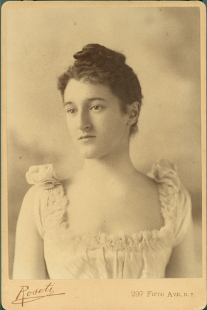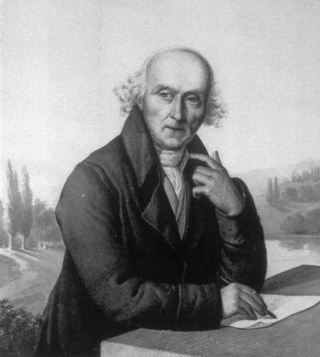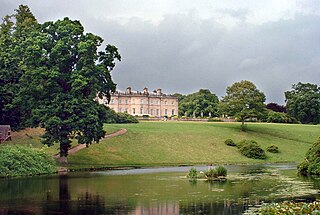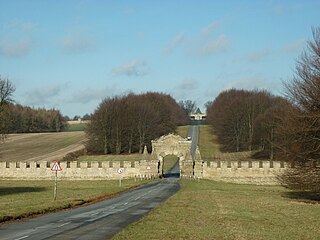
Andrew Marvell was an English metaphysical poet, satirist and politician who sat in the House of Commons at various times between 1659 and 1678. During the Commonwealth period he was a colleague and friend of John Milton. His poems range from the love-song "To His Coy Mistress", to evocations of an aristocratic country house and garden in "Upon Appleton House" and "The Garden", the political address "An Horatian Ode upon Cromwell's Return from Ireland", and the later personal and political satires "Flecknoe" and "The Character of Holland".

Beatrix Cadwalader Farrand was an American landscape gardener and landscape architect. Her career included commissions to design about 110 gardens for private residences, estates and country homes, public parks, botanic gardens, college campuses, and the White House. Only a few of her major works survive: Dumbarton Oaks in Washington, D.C., the Abby Aldrich Rockefeller Garden on Mount Desert, Maine, the restored Farm House Garden in Bar Harbor, the Peggy Rockefeller Rose Garden at the New York Botanical Garden, and elements of the campuses of Princeton, Yale, and Occidental.

William Kent was an English architect, landscape architect, painter and furniture designer of the early 18th century. He began his career as a painter, and became Principal Painter in Ordinary or court painter, but his real talent was for design in various media.

Lancelot "Capability" Brown was an English gardener and landscape architect, a notable figure in the history of the English landscape garden style.

Humphry Repton was the last great designer of the classic phase of the English landscape garden, often regarded as the successor to Capability Brown. His style is thought of as the precursor of the more intricate and eclectic styles of the 19th century. His first name is often incorrectly spelt "Humphrey".

Dumbarton Oaks, formally the Dumbarton Oaks Research Library and Collection, is a historic estate in the Georgetown neighborhood of Washington, D.C. It was the residence and gardens of wealthy U.S. diplomat Robert Woods Bliss and his wife Mildred Barnes Bliss. The estate was founded by the Bliss couple, who gave the home and gardens to Harvard University in 1940.

Picturesque is an aesthetic ideal introduced into English cultural debate in 1782 by William Gilpin in Observations on the River Wye, and Several Parts of South Wales, etc. Relative Chiefly to Picturesque Beauty; made in the Summer of the Year 1770, a practical book which instructed England's leisured travellers to examine "the face of a country by the rules of picturesque beauty". Picturesque, along with the aesthetic and cultural strands of Gothic and Celticism, was a part of the emerging Romantic sensibility of the 18th century.
Reception theory is a version of reader response literary theory that emphasizes each particular reader's reception or interpretation in making meaning from a literary text. Reception theory is generally referred to as audience reception in the analysis of communications models. In literary studies, reception theory originated from the work of Hans-Robert Jauss in the late 1960s, and the most influential work was produced during the 1970s and early 1980s in Germany and the US, with some notable work done in other Western European countries. A form of reception theory has also been applied to the study of historiography.

The English landscape garden, also called English landscape park or simply the English garden, is a style of "landscape" garden which emerged in England in the early 18th century, and spread across Europe, replacing the more formal, symmetrical French formal garden which had emerged in the 17th century as the principal gardening style of Europe. The English garden presented an idealized view of nature. Created and pioneered by William Kent and others, the "informal" garden style originated as a revolt against the architectural garden and drew inspiration from landscape paintings by Salvator Rosa, Claude Lorrain, and Nicolas Poussin, as well as from the classic Chinese gardens of the East, which had recently been described by European travellers and were realized in the Anglo-Chinese garden.
Christopher Edward Clive Hussey CBE was a British architecture writer. He was one of the chief authorities on British domestic architecture of the generation that also included Dorothy Stroud and Sir John Summerson.

The Morris Arboretum & Gardens of the University of Pennsylvania is the official arboretum of the Commonwealth of Pennsylvania. The Arboretum is open daily except for major holidays. It is located at 100 East Northwestern Avenue, Chestnut Hill, Philadelphia, Pennsylvania.
"The Garden" is a widely anthologized poem by the seventeenth-century English poet, Andrew Marvell. The poem was first published posthumously in Miscellaneous Poems (1681). “The Garden” is one of several poems by Marvell to feature gardens, including his “Nymph Complaining for the Death her Fawn,” “The Mower Against Gardens,” and “Upon Appleton House.”

An Islamic garden is generally an expressive estate of land that includes themes of water and shade. Their most identifiable architectural design reflects the charbagh quadrilateral layout with four smaller gardens divided by walkways or flowing water. Unlike English gardens, which are often designed for walking, Islamic gardens are intended for rest, reflection, and contemplation. A major focus of the Islamic gardens was to provide a sensory experience, which was accomplished through the use of water and aromatic plants.

Jean-Marie Morel, the author of La Théorie des Jardins, was a trained architect and surveyor, who produced a substantial and popular work advocating the "natural" landscape style of gardening in France, a French landscape garden. Morel never visited England to see the English garden style, but his book profited from the published theories of Thomas Whately and Claude-Henri Watelet and from the experience he had gained from his close association with the marquis de Girardin at Ermenonville. Girondin's own De la Composition des paysages appeared in 1777.
Timothy Mowl FSA is an architectural and landscape historian. He is Emeritus Professor of History of Architecture and Designed Landscapes at the University of Bristol, and Honorary Professor at the Royal Agricultural University, Cirencester. He is also Director of AHC Consultants. He was awarded the Hawksmoor Medal of the Society of Architectural Historians of Great Britain in 1987, was elected a Fellow of the Society of Antiquaries of London in 1993, and served as a member of Council of the Garden History Society between 2002 and 2007. He is currently President of the Avon Gardens Trust.

Estate houses in Scotland or Scottish country houses, are large houses usually on landed estates in Scotland. They were built from the sixteenth century, after defensive castles began to be replaced by more comfortable residences for royalty, nobility and local lairds. The origins of Scottish estate houses are in aristocratic emulation of the extensive building and rebuilding of royal residences, beginning with Linlithgow, under the influence of Renaissance architecture. In the 1560s the unique Scottish style of the Scots baronial emerged, which combined features from medieval castles, tower houses, and peel towers with Renaissance plans, in houses designed primarily for residence rather than defence.

Sharawadgi or sharawaggi is a style of landscape gardening or architecture in which rigid lines and symmetry are avoided to give the scene an organic, naturalistic appearance. This was supposedly a concept in the Chinese garden, and starting with Sir William Temple's essay Upon the gardens of Epicurus, may have been influential in English landscape gardening in the 18th century. The reports from China of the Jesuit missionary, Father Attiret added to this. Sir William Temple first used the word "sharawadgi" in discussing the Chinese idea of beauty without order in garden design, in contrast to the straight lines, regularity, and symmetries then popular in the formal Baroque gardens of Europe, led by the French formal garden. The style indicates a certain irregularity in the design.

Paolo Bürgi is a Swiss landscape architect.
Christopher M. S. Johns was an American art historian, and the Norman L. and Roselea J. Goldberg Professor of History of Art at Vanderbilt University, who specialized in eighteenth-century Italian art, decorative art, material culture, and architecture. He was a leading scholar of early modern Italian art and culture, especially the relationship between art, politics, and religion in eighteenth-century Rome.

The Carrmire Gate is a folly forming part of the estate landscape of Castle Howard, a country house in North Yorkshire, in England.















